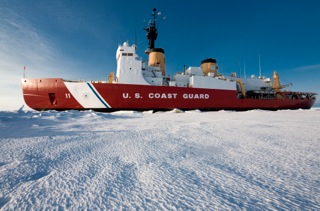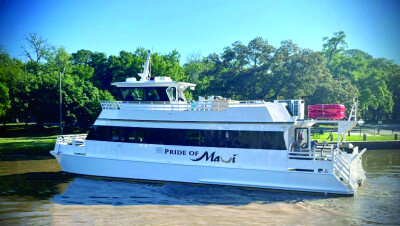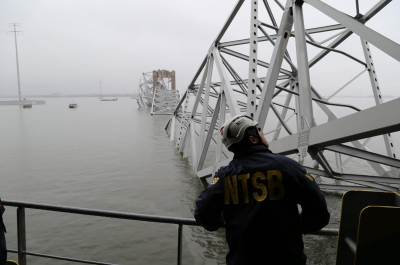Weeks before President Obama weighed in on the Coast Guard’s icebreakers, Rep. Don Young, R-Alaska, noted at a hearing that other polar region countries such as Russia have good icebreaking fleets, but “I don’t want to be leasing from them.”
The Polar Sea. USCG photo.
Hopefully, no one else in Congress does either.
Maybe they’ll be persuaded by a new Congressional Research Service (CRS) report that concludes that “unless the service life of Polar Star is further extended (or unless Polar Sea is repaired and returned to service), there will be a period of perhaps two to six years during which the United States will have no operational heavy polar icebreakers.”
Not a good idea if you consider the icebreakers’ missions as outlined in the report, which include: “defending U.S. sovereignty in the Arctic by helping to maintain a U.S. presence in U.S. territorial waters in the region;” and “monitoring sea traffic in the Arctic, including ships bound for the United States.”
The Polar Star is the Coast Guard’s only operating heavy icebreaker. Many of the systems are obsolete, Gary Rasicot, the Coast Guard’s director of marine transportation systems, told a congressional committee, “and believe it or not they have to buy some of the fuses for their main generators and switchboards on eBay” because they’re no longer manufactured. They’ve also taken parts off Polar Sea for Polar Star. The 399'×83' Polar Sea was put on inactive status in October 2011 after engine failure in 2010. Both were built in the mid 1970s by Lockheed Shipbuilding in Seattle.
The issue for Congress is whether to approve, reject, or modify the administration’s plans for modernizing the fleet, said the report, which focused on the polar region and not the Great Lakes. What Congress decides will affect not only the Coast Guard’s polar missions but also “the U.S. shipbuilding industrial base.” A new heavy polar icebreaker could cost $900 million to $1.1 billion. Refurbishing the Polar Sea for seven to 10 years of service would take about three years and cost about $100 million.
In conjunction with his recent Alaska visit, the president called for moving up completion of a new icebreaker by two years, to 2020, and getting funding from Congress for a fleet to keep pace with the Russians, who have a total of 40 icebreakers and 11 planned or under construction.
But, as the CRS report points out, the president’s budget proposals have been steadily decreasing and the timeline changing when it comes to icebreakers.
For example, the administration’s 2013 budget included $860 million over five years for a new polar icebreaker. The 2015 proposal dropped the amount to $230 million, “but did not state when a construction contract for the ship might be awarded, creating uncertainty about the timing of the project,” the CRS report said. The 2016 version reduced five-year funding to $166 million and again didn’t give a time for awarding a construction contract.
Among the Coast Guard’s options, the report notes, are: have other federal agencies pay part of the cost; build one in, for instance, a Scandinavian yard, which is not likely to violate the Jones Act since it’s not transporting cargo – but other laws may apply; and leasing a privately-built and privately-owned icebreaker, which would be crewed by the Coast Guard or a mix of Coast Guard and civilian mariners.
Whatever they decide, they need to do something now.





